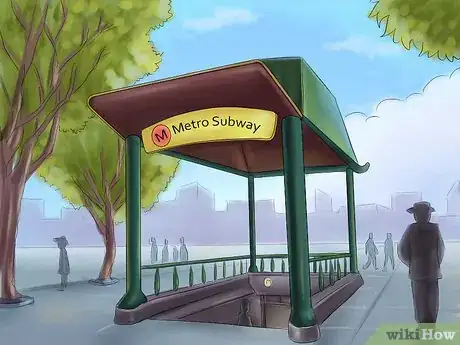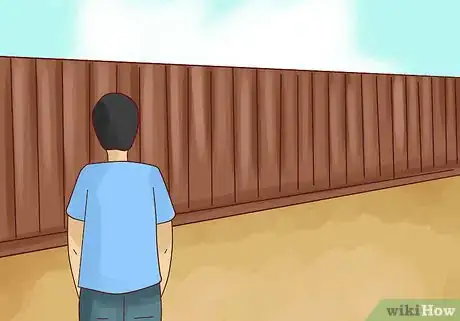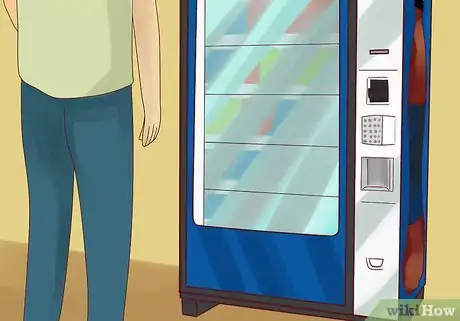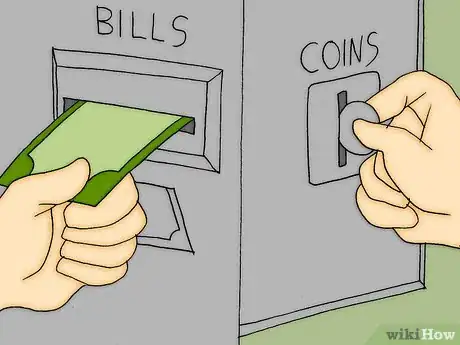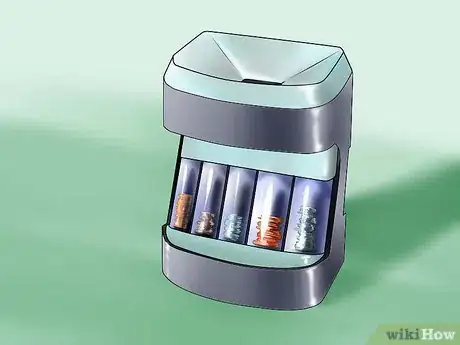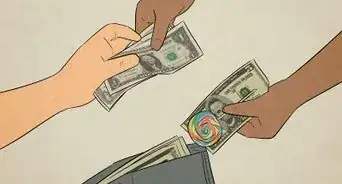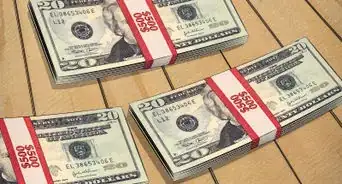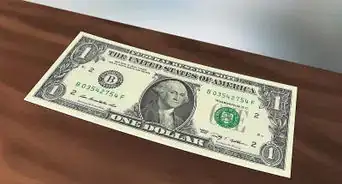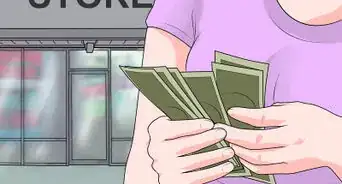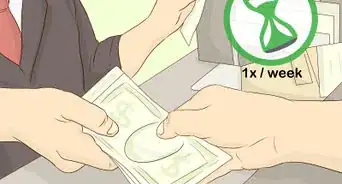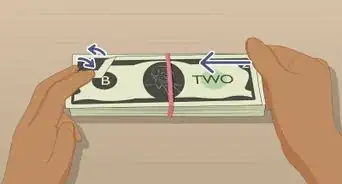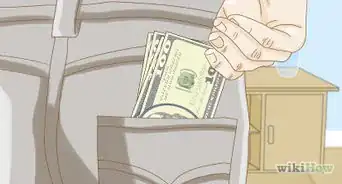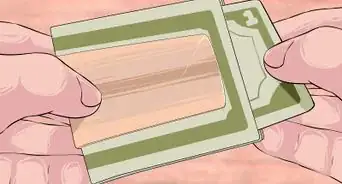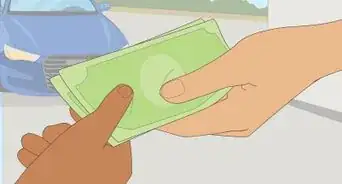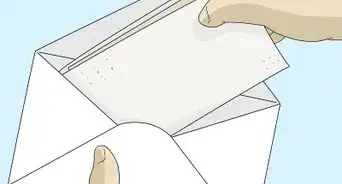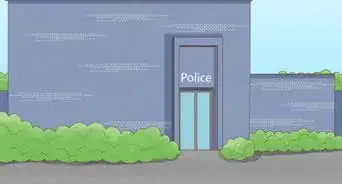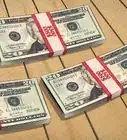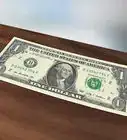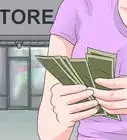wikiHow is a “wiki,” similar to Wikipedia, which means that many of our articles are co-written by multiple authors. To create this article, 19 people, some anonymous, worked to edit and improve it over time.
wikiHow marks an article as reader-approved once it receives enough positive feedback. In this case, several readers have written to tell us that this article was helpful to them, earning it our reader-approved status.
This article has been viewed 166,261 times.
Learn more...
More than $10 billion in loose change can be found under sofa cushions and on street corners every year. Most people might never think to pick up a stray nickel or dime here and there, but the average American takes more than $600 in change every year through regular transactions.[1] Collecting loose change can add a significant boost to your savings. This article will give you some tips for how to pocket some extra cash.
Steps
Finding Loose Change in Your Home
-
1Start collecting at home. Your home is a treasure trove of loose change, so you should mine this space first. The area underneath a sofa cushion is a great space to start, but look in any high traffic areas, such as entryways, hallways and the kitchen.
- The laundry room is also a key space to investigate since loose change will often fall out of pockets in the washer or dryer.
-
2Check your closet. Most of your change will reside in your pockets, so check pants, skirts, and shorts that you haven't worn for awhile to see if there is any change left behind there.
- If you have multiple purses, be sure to check them thoroughly for extra change. Go through every compartment in the purse to ensure you haven't missed a spot.
Advertisement -
3Clean every nook and cranny. Doing a deep clean of your home will also reveal change in places you hadn't looked before. Pull out furniture from walls so you can vacuum the floor underneath; you will most likely find loose change under sofas, beds, recliners, and coffee tables.
-
4Search your car. Your car is also another spot where you are likely to have loose change. If you have ever used a drive-thru to order food or have gotten change from a drive-up bank teller, there is a good chance you have change underneath your seat or in the side compartments of your doors. Check under the floor mats as well and in the pockets behind seats as well.
- It is a good idea to keep spare change in your car in case you need it for metered parking.
-
5Create a central collection spot. As you find change, you need to have a central place to keep it so it doesn't get lost again. You can use a jar, a small box, or a grown up piggy bank (or a toy version if you are a kid or kid at heart). Put this bank in a convenient location, like by the front door or in a hallway that you walk down frequently, so you won't forget to use it.
- If you have kids, give them a piggy bank and encourage them to cash in on the fun, too. If there is a particular toy that they want, encourage them to save half of the money for it in loose change so they have a goal to work toward. Collecting change around the house can teach them important lessons about saving and budgeting.[2]
Collecting Loose Change in Public
-
1Look down in a crowd. Your best bet for finding change in public is to look in a crowded, busy space, like an airport, a subway station, or a train station. In spaces like these, most people won't bother to stop and pick up change they have dropped because they are too busy to notice it's gone. More than $675,000 in loose change was left in American airports last year.[3]
- Pay attention to security areas of airports. TSA guidelines require passengers to empty their pockets of loose change, but many passengers do not recollect this change from security bins.
-
2Follow heavy foot traffic. Go to places where there is a lot of pedestrian activity. If you live near a popular bar area, you might consider taking a walk on an early Sunday morning to look for change on the ground left behind from people the night before. If you visit ballparks, concert venues and movie theaters, you should also keep an eye out for change on the ground or under the rows of seats.
- If you are looking for change on sidewalks, be sure to also check gutters too.
-
3Think about where you use change. How often do you use physical change in your daily activities? You most likely use it at places like vending machines, ATMs, laundromats, food carts, parking meters and while standing at a cash register. Look on the ground around these places to check and see if there is any loose change.
- At vending machines, you can check the returned change slot to see if there are any stray coins left behind.
- If you are using a drive-thru to pick up food, you might get out of your car while you are waiting to look for change. Many customers drop change when the cashier hands it to them through the window, so this is also a good place to check.
- At cash registers, be sure that you only pick up change on the ground. Many businesses will leave out jars or dishes for tips or for collections for charities. Do not take change in these receptacles; that is illegal.
-
4Look around fences or other barriers. Often, when there is bad weather or a strong wind, stray bills and loose change will be pushed around until they hit a barrier like a fence. Check along the ground near fences to see if any money has been pushed against them.
-
5Get in the weeds. If you are walking around a park or public garden, look around the less tended areas such as tall grass or weeds. Often when change is dropped in these areas, it goes unnoticed for a long time. Taking the time to look here can pay off.
-
6Check the Coin Return slot of vending machines. Often times when someone puts a dollar into a vending machine and buys something, the cost won't come to a dollar, leaving change in the slot. Some people just walk away without realizing the money is in there, meaning these can be hotspots in finding some extra change.
-
7Be aware of your surroundings. While picking up change is generally a great idea, you also need to use common sense while collecting it in public. If you are crossing the street in Times Square in New York City with hundreds of other people, it might not be a good idea to stop in the middle to pick up a dime because you could trip up other people and possibly get hurt yourself.
- Before you pick up change from the pavement, make sure it is a coin and not a broken piece of glass or other dangerous object. Getting an infected cut on your hand is not worth a nickel.
- Make sure that you are not loitering or entering private property when you look for change.
Cashing In On Your Change
-
1Take it to a coin sorting kiosk. The most convenient method for cashing in your change is to simply take your jar of coins to a machine that will sort the change for you and distribute your cash. These machines, like Coinstar, are usually found in grocery stores, malls and other retail locations. You simply pour the coins from your jar into the machine and it will then convert it into cash.
- The main downside to kiosks like Coinstar is that they take a significant cut of your cash in service fees -- roughly 9 cents to every dollar you have collected.
-
2Roll your coins for your bank. Some banks will give you cash for loose change, but you have to sort the change into each category (pennies, nickels, dimes, quarters) before they will do this. You can get these rolled tubes from your bank, but you will have to take the time to sort and roll them yourself.
- Be sure to check with your bank beforehand to make sure they will cash rolled coins from you. Some banks do not cash loose change. Other banks will accept rolled coins, but they will charge a fee to cash them.
-
3Purchase your own coin sorting machine. If you don't want to sort all the nickels, dimes and pennies yourself, you can look into buying your own coin sorting machine, which generally cost between $25-$35. These machines will sort your coins and then put them into the appropriate roll for you to take to the bank.
- You might not want to invest in this kind of machine when you are first starting to collect coins. If you only collect $15 in change in one year, it won't be worth even the price of the coin sorting machine.
Community Q&A
-
QuestionDo I have to give it back if I know it belongs to someone?
 DonaganTop AnswererYou don't have to. Do whatever your conscience can live with.
DonaganTop AnswererYou don't have to. Do whatever your conscience can live with. -
QuestionAre there any machines that exchange currency? I have over $150 in American bills, but I live in Canada.Contact a currency exchange office, they do indeed have automated machines that detect your currency and give out your requested currency. No matter what you do, though, you'll always pay the exchange fee.
References
About This Article
If you know where to look, you might be surprised how much loose change you can find. At home, check between your couch cushions, under furniture, and in the pockets of pants and jackets in your closet. If you or someone in your household has a car, look for loot in its footwells, seats, or trunk. In public, look around busy places, like subway stations, airports, and shopping malls, where people might have dropped change. Pay special attention to places where people get their money out, like parking meters, laundromats, food carts, ATMs, vending machines, and ticket machines. Check the coin return slots of the machines too, since people sometimes forget to take their change. For more tips, including how to convert your coins to notes, read on!
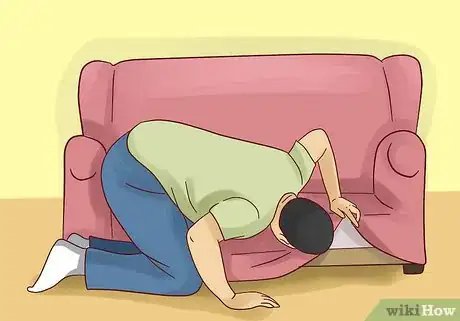
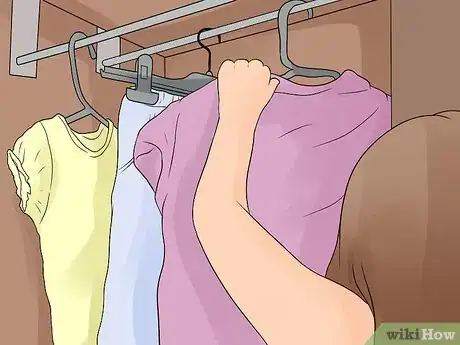

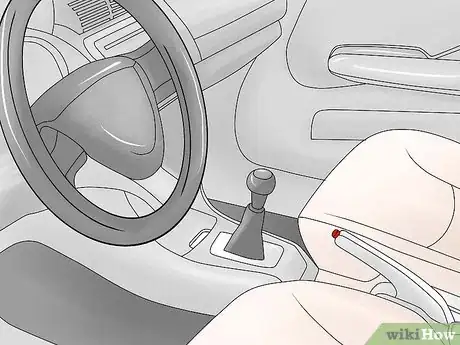
-Step-20-Version-2.webp)
